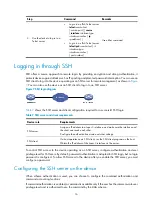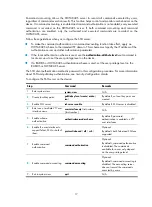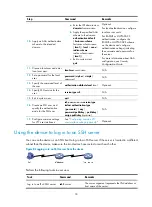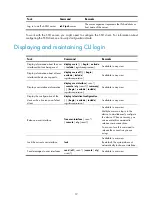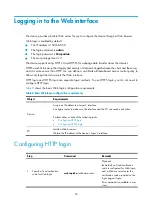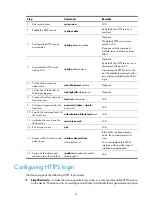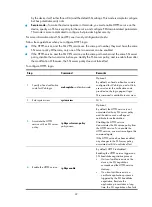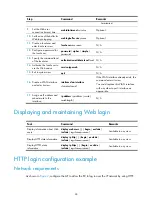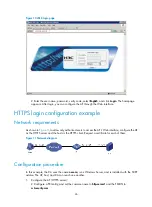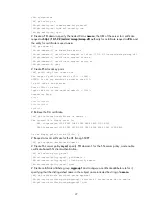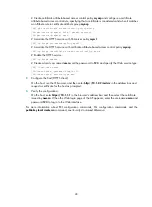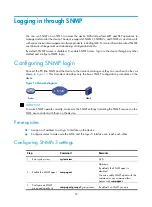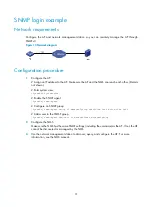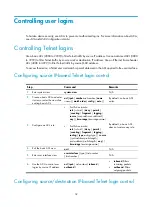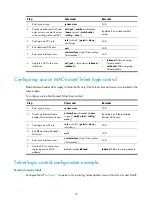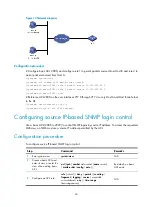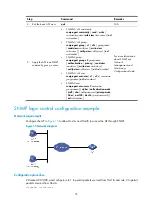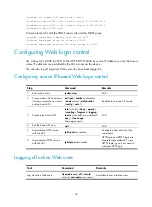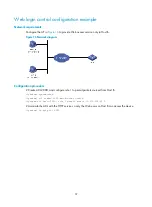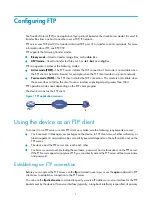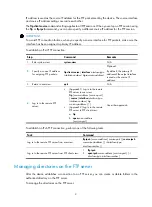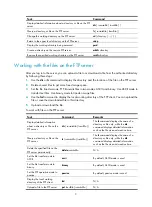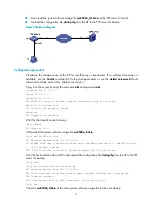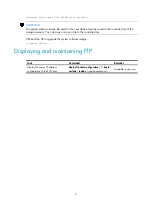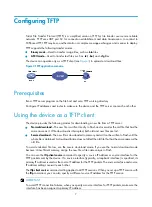
30
Step Command Remarks
access right. [
authentication
|
privacy
]
[
read-view
read-view
] [
write-view
write-view
] [
notify-view
notify-view
] [
acl
acl-number
] *
configured.
4.
Add a user to the SNMP
group.
snmp-agent
usm-user
v3
user-name
group-name
[ [
cipher
]
authentication-mode
{
md5
|
sha
}
auth-password
[
privacy-mode
{
3des
|
aes128
|
des56
}
priv-password
] ] [
acl
acl-number
] *
N/A
Configuring SNMPv1 or SNMPv2c settings
Step Command
Remarks
1.
Enter system view.
system-view
N/A
2.
Enable the SNMP agent.
snmp-agent
Optional.
By default, the SNMP agent is
disabled.
You can enable SNMP agent
with this command or any
command that begins with
snmp-agent
.
3.
Create or update MIB
view information.
snmp-agent mib-view
{
excluded
|
included
}
view
-
name
oid
-
tree
[
mask
mask-value
]
Optional.
By default, the MIB view
name is ViewDefault and OID
is 1.
4.
Configure the SNMP
access right.
•
(Approach 1) Specify the SNMP NMS
access right directly by configuring an
SNMP community:
snmp-agent
community
{
read
|
write
}
community
-
name
[
mib-view
view-name
]
[
acl
acl-number
] *
•
(Approach 2) Configure an SNMP group
and add a user to the SNMP group:
a.
snmp-agent
group
{
v1
|
v2c
}
group-name
[
read-view
read-view
]
[
write-view
write-view
] [
notify-view
notify-view
] [
acl
acl-number
] *
b.
snmp-agent
usm-user
{
v1
|
v2c
}
user-name
group-name
[
acl
acl-number
] *
Use either approach.
The username in approach 2
is equivalent to the
community name used in
approach 1, and must be the
same as the community name
configured on the NMS.

